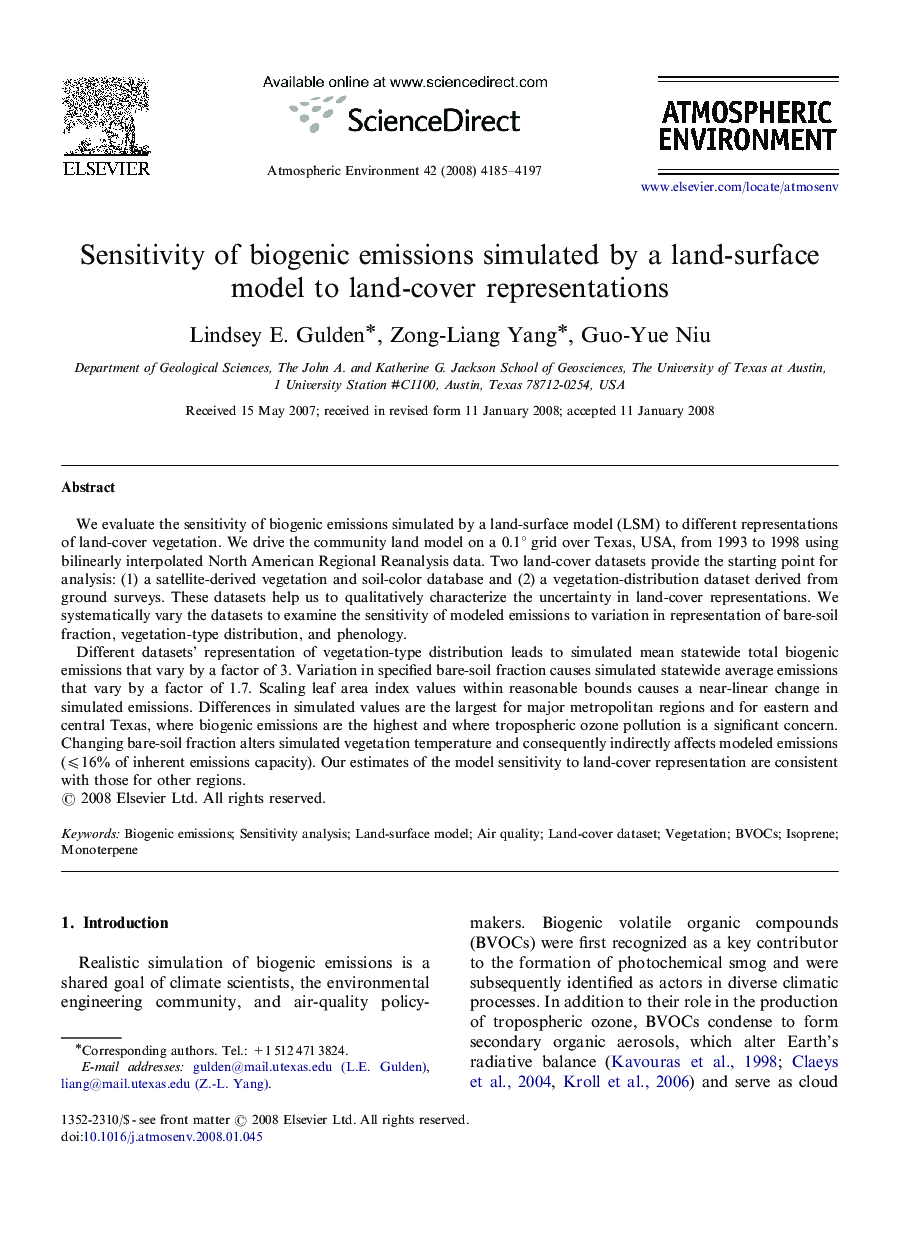| Article ID | Journal | Published Year | Pages | File Type |
|---|---|---|---|---|
| 4442912 | Atmospheric Environment | 2008 | 13 Pages |
We evaluate the sensitivity of biogenic emissions simulated by a land-surface model (LSM) to different representations of land-cover vegetation. We drive the community land model on a 0.1° grid over Texas, USA, from 1993 to 1998 using bilinearly interpolated North American Regional Reanalysis data. Two land-cover datasets provide the starting point for analysis: (1) a satellite-derived vegetation and soil-color database and (2) a vegetation-distribution dataset derived from ground surveys. These datasets help us to qualitatively characterize the uncertainty in land-cover representations. We systematically vary the datasets to examine the sensitivity of modeled emissions to variation in representation of bare-soil fraction, vegetation-type distribution, and phenology.Different datasets’ representation of vegetation-type distribution leads to simulated mean statewide total biogenic emissions that vary by a factor of 3. Variation in specified bare-soil fraction causes simulated statewide average emissions that vary by a factor of 1.7. Scaling leaf area index values within reasonable bounds causes a near-linear change in simulated emissions. Differences in simulated values are the largest for major metropolitan regions and for eastern and central Texas, where biogenic emissions are the highest and where tropospheric ozone pollution is a significant concern. Changing bare-soil fraction alters simulated vegetation temperature and consequently indirectly affects modeled emissions (⩽16% of inherent emissions capacity). Our estimates of the model sensitivity to land-cover representation are consistent with those for other regions.
